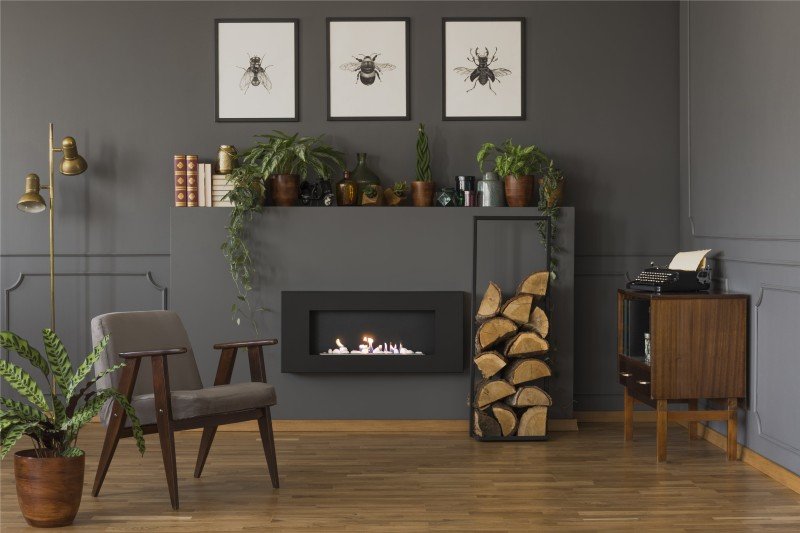Small Fireplaces Explained In Fewer Than 140 Characters
A Comprehensive Guide to Small Fireplaces: Efficient Heating and Cozy Living
In an age where energy performance and space optimization are becoming progressively essential, small fireplaces have actually emerged as an enticing alternative to traditional, large hearths. These compact heating options use heat and a centerpiece for any space, heightening both convenience and aesthetic appeal. This short article checks out the different kinds of small fireplaces, their advantages, setup considerations, and upkeep tips, ultimately assisting house owners make notified decisions when thinking about these lovely heating alternatives.
Understanding Small Fireplaces
Small fireplaces offer a range of styles, including electric, gas, ethanol, and wood-burning models. Each type provides unique benefits and design possibilities, making them ideal for various living areas.
Types of Small Fireplaces
Fireplace Type
Description
Pros
Cons
Electric
Utilizes electrical power to create heat. Uses many styles, consisting of wall-mounted and freestanding units.
- Easy to set up
- Low maintenance
- No venting required
- Limited heat output
- May incur greater electrical power costs
Gas
Burns gas or gas. Frequently readily available as logs in a traditional fireplace or modern styles.
- Efficient heat output
- Cleaner than wood
- Easy ignition
- Requires gas line installation
- Some units require venting
Ethanol
Burns bioethanol, providing real flames without a chimney.
- Eco-friendly
- Portable
- No setup needed
- Limited heat output
- Higher fuel costs
Wood-Burning
Traditional fireplaces that burn fire wood. Typically utilized in more rustic settings.
- Great heat output
- Rich atmosphere
- Can be utilized throughout power interruptions
- Requires a chimney
- Regular maintenance and cleaning
Advantages of Small Fireplaces
- Area Efficiency: Small fireplaces are ideal for homes, condos, and smaller homes. They maximize warmth without taking up extreme floor area.
- Cost-Effective Heating: In particular cases, small fireplaces can supplement main heating systems, decreasing total energy expenses while creating a more comfy environment.
- Atmosphere and Aesthetics: They supply a welcoming focal point to a space, creating a cozy environment perfect for relaxation and celebrations.
- Flexibility: Available in various styles and styles, small fireplaces can complement any design, from modern minimalist to rustic traditional.
Setup Considerations
When contemplating a small fireplace, installation is a crucial element that can affect the choice of model. Below are useful considerations:
- Local Regulations: Building codes can vary by location; constantly check local standards before installation.
- Ventilation Needs: Depending on the type, small fireplaces may need different ventilation systems. Gas fireplaces may require venting outdoors, while electric designs do not.
- Source of power: Electric designs require proximity to electrical outlets, while gas and ethanol designs might need a gas line or fuel storage.
- Weight and Structure: Installing wall-mounted systems may require strengthened wall areas, whereas free-standing models are easier to relocate.
Maintenance Tips
Like any other home appliance, small fireplaces require routine upkeep to function successfully and safely. Here are necessary upkeep tips for various fireplace types:
For Electric Fireplaces:
- Cleaning: Wipe down the system with a soft cloth to remove dust and keep the heating system ducts clear.
- Inspection: Check the power cord regularly for any damages or indications of wear.
For Gas Fireplaces:
- Annual Inspections: Schedule annual evaluations by a professional to make sure safe gas circulation.
- Clean the Logs: Regularly tidy the burner and logs to maintain optimal efficiency.
For Ethanol Fireplaces:
- Fuel Storage: Store ethanol fuel securely away from direct sunlight and heat sources.
- Routine Cleaning: Clean the burner after each use to preserve performance and prevent soot buildup.
For Wood-Burning Fireplaces:
- Chimney Sweeping: Have the chimney professionally cleaned when a year to prevent creosote accumulation.
- Fire wood Storage: Only usage dry, skilled wood to decrease smoke and promote efficient burning.
Frequently Asked Questions
1. Can Outdoor Fireplaces UK install a small fireplace myself?
While some electric and ethanol fireplaces are reasonably simple to install, it is advisable to work with a professional for gas and wood-burning units to guarantee compliance with regional building regulations.
2. How much does it cost to run a small fireplace?
The expense will vary depending on the kind of fireplace. Generally, electric fireplaces might sustain greater electrical power costs, while wood-burning options can draw from renewable firewood products.
3. Do I need an authorization for installation?
Authorizations are generally needed for gas and wood-burning fireplaces due to their setup intricacy and safety regulations. Constantly contact regional authorities.
4. For how long can I run an electric fireplace?
A lot of electric fireplaces can run for extended periods; however, it's advised to follow producer guidelines to avoid overheating or damaging the system.
5. What type of small fireplace is best for a small area?
This mostly depends on private needs. Electric models are flexible and easy to install, while gas and ethanol choices offer genuine flames with effective heat output.
Small fireplaces represent a functional and stylish alternative for those looking for efficient heating solutions in compact living areas. With numerous types offered, homeowners can pick designs that align with their visual preferences and space requirements. By comprehending the setup procedures and routine upkeep required, individuals can enjoy the comfort and atmosphere that small fireplaces use for many years to come. Whether for a cozy night at home or an inviting area for events, small fireplaces are a long-lasting aspect of modern and traditional decoration alike.
